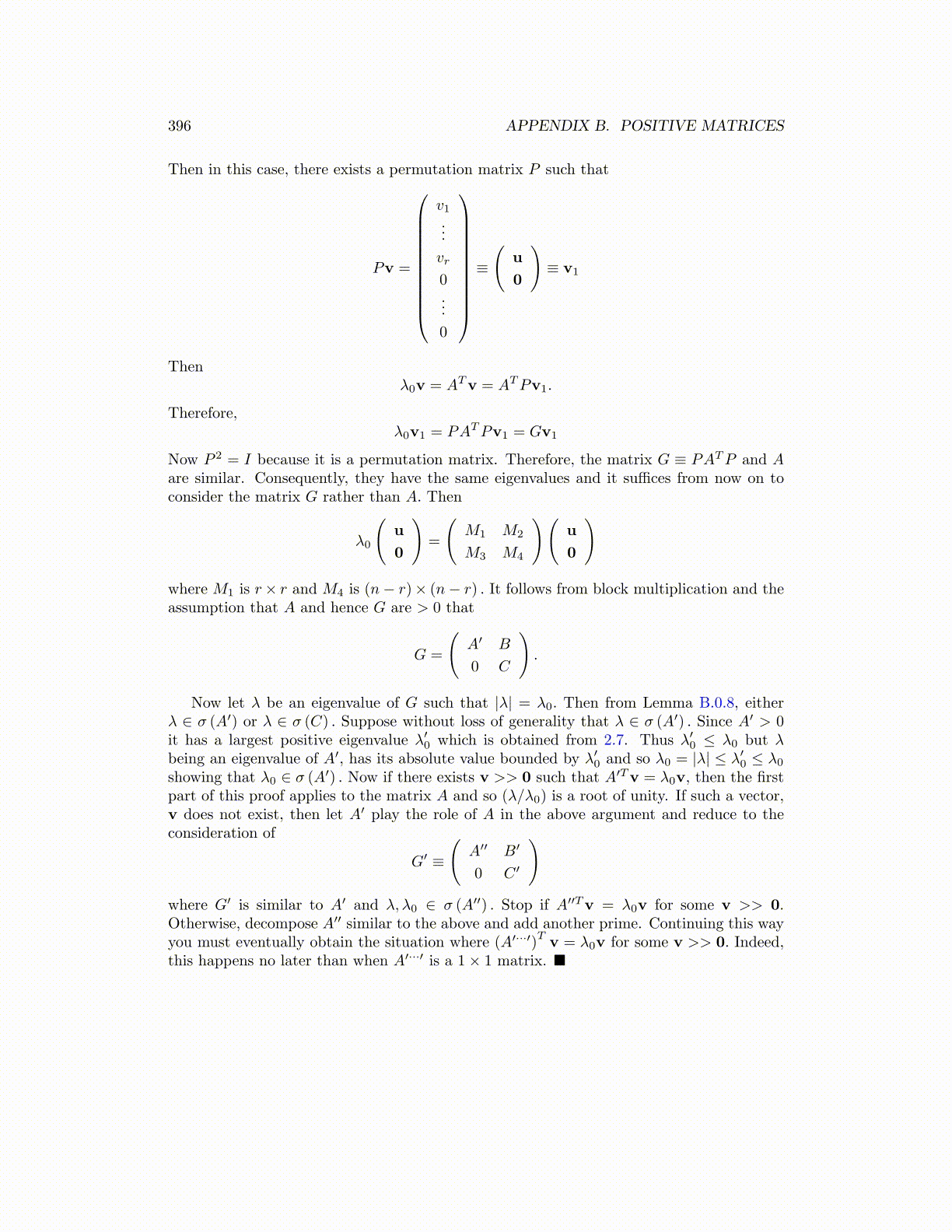
396 APPENDIX B. POSITIVE MATRICES
Then in this case, there exists a permutation matrix P such that
Pv =
v1...
vr
0...
0
≡
(u
0
)≡ v1
Thenλ0v = ATv = ATPv1.
Therefore,λ0v1 = PATPv1 = Gv1
Now P 2 = I because it is a permutation matrix. Therefore, the matrix G ≡ PATP and Aare similar. Consequently, they have the same eigenvalues and it suffices from now on toconsider the matrix G rather than A. Then
λ0
(u
0
)=
(M1 M2
M3 M4
)(u
0
)
where M1 is r× r and M4 is (n− r)× (n− r) . It follows from block multiplication and theassumption that A and hence G are > 0 that
G =
(A′ B
0 C
).
Now let λ be an eigenvalue of G such that |λ| = λ0. Then from Lemma B.0.8, eitherλ ∈ σ (A′) or λ ∈ σ (C) . Suppose without loss of generality that λ ∈ σ (A′) . Since A′ > 0it has a largest positive eigenvalue λ′0 which is obtained from 2.7. Thus λ′0 ≤ λ0 but λbeing an eigenvalue of A′, has its absolute value bounded by λ′0 and so λ0 = |λ| ≤ λ′0 ≤ λ0showing that λ0 ∈ σ (A′) . Now if there exists v >> 0 such that A′Tv = λ0v, then the firstpart of this proof applies to the matrix A and so (λ/λ0) is a root of unity. If such a vector,v does not exist, then let A′ play the role of A in the above argument and reduce to theconsideration of
G′ ≡
(A′′ B′
0 C ′
)where G′ is similar to A′ and λ, λ0 ∈ σ (A′′) . Stop if A′′Tv = λ0v for some v >> 0.Otherwise, decompose A′′ similar to the above and add another prime. Continuing this wayyou must eventually obtain the situation where (A′···′)
Tv = λ0v for some v >> 0. Indeed,
this happens no later than when A′···′ is a 1× 1 matrix. ■